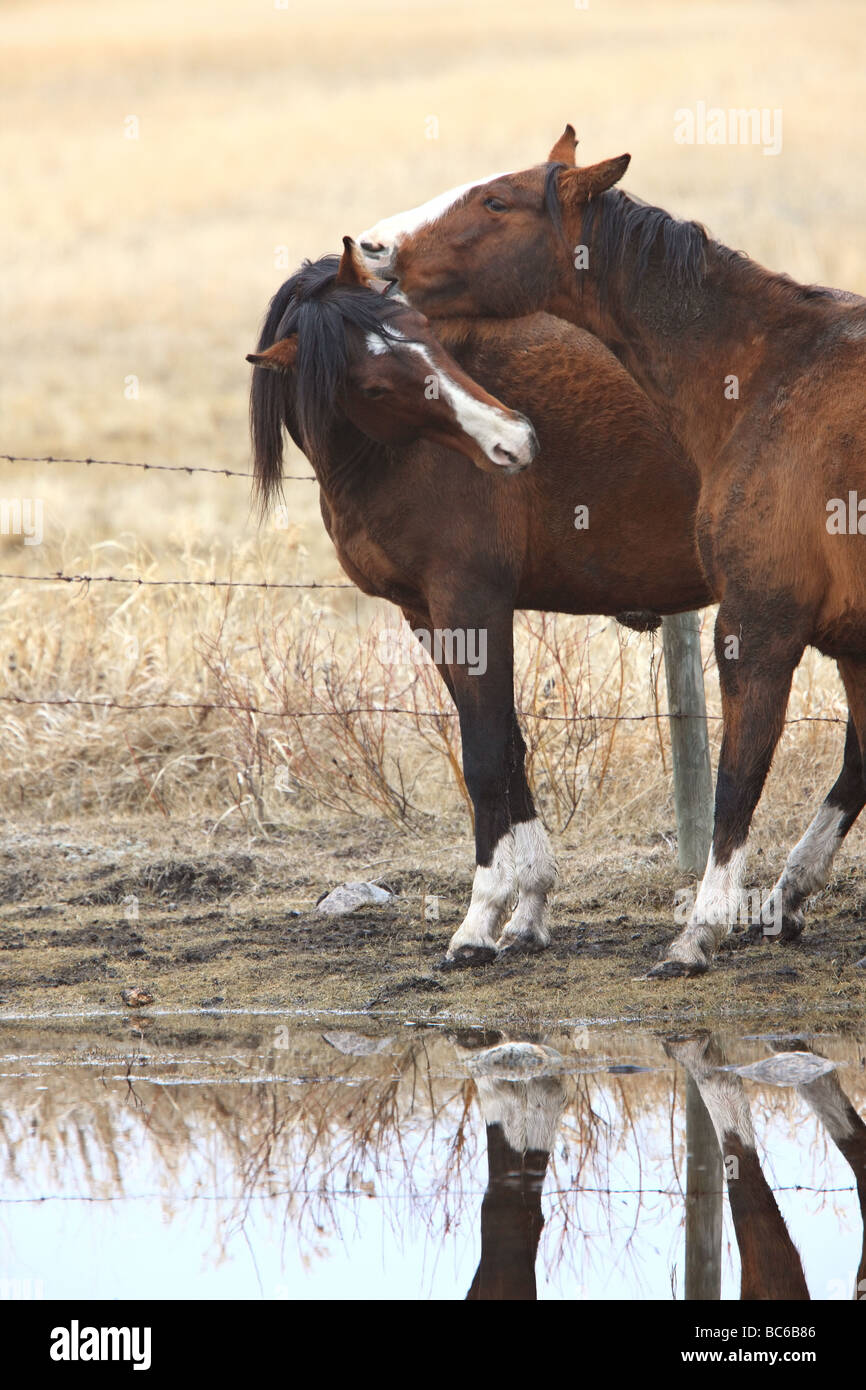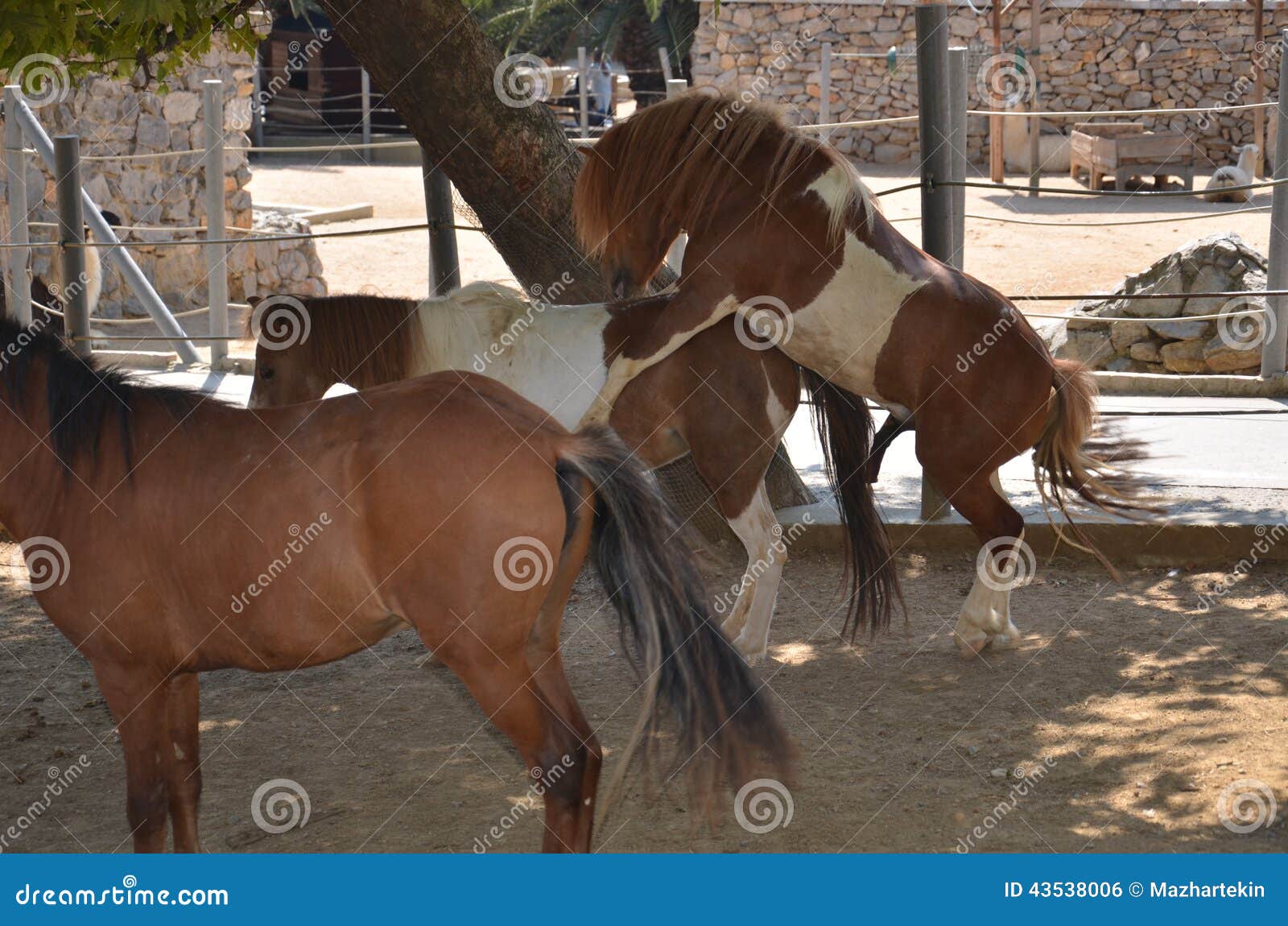Uncovering The Horse Mating Season: What You Need To Know
Have you ever wondered about the special time when horses prepare to welcome new life into the world? It's a rather fascinating period, often called the horse mating season, and it truly shapes the future of these magnificent creatures. This yearly cycle is a big part of what makes horse care so interesting, and for anyone who loves horses, understanding this time is just a little bit important. So, you know, we're going to explore this natural rhythm that guides these animals.
Horses, as you might know, are amazing animals. They belong to the taxonomic family called Equidae, and our domesticated friends, Equus caballus, are one of two types of Equus ferus still around. These hoofed, plant-eating mammals, with their very strong bodies, have been with people for a very long time, used for moving things and working on farms. There are, apparently, about 60 million domesticated horses all over the world right now.
This yearly cycle, the time for horses to breed, is a natural wonder. It shows how these animals respond to their surroundings and the changing seasons. Knowing about it helps us care for them better, whether you have horses yourself or are just curious about their lives. It's a very big part of their story, actually, and how they continue to thrive.
Table of Contents
- What is Horse Mating Season?
- Recognizing the Signs
- Breeding Methods and Care
- Frequently Asked Questions about Horse Mating Season
- Looking Ahead to New Life
What is Horse Mating Season?
The horse mating season, also known as the breeding season, is that time of year when horses are naturally ready to reproduce. It's a very specific window, usually in the warmer months, when mares become fertile and stallions are most active. This period is, in some respects, a yearly event that has been happening for thousands of years, guiding how horse populations grow and continue.
For many horses, this special time starts in the spring and goes through the summer. It's not just a random occurrence; there are some pretty strong biological reasons behind it. Understanding these reasons helps us appreciate the natural rhythms of these animals, whose scientific name, Equus caballus, literally means "horse" in Latin, while "Equus" also comes from an ancient Greek word meaning "quickness."
Biological Clues: The Role of Light
One of the biggest triggers for the horse mating season is the amount of daylight. As the days get longer in spring, a mare's body gets a signal to start her reproductive cycles. This is a very clever way nature has designed things, ensuring that foals are born when the weather is warm and there is plenty of food. It's a system that, you know, has worked for a very long time.
- Is Ssense Legit
- Yololary Removing Her Spiderman Suit
- Disney Removing American Flag
- Addrom Bypass
- T%C3%BCrk Porno Sotwe
Mares are what we call "seasonally polyestrous." This means they have several heat cycles within a particular season, not all year round. This natural timing helps new foals arrive when conditions are best for their survival, typically in the spring or early summer of the next year. It's a really smart arrangement, apparently, for young ones.
The Mare's Cycle: Estrus
During the mating season, a mare goes through what's called an estrous cycle, or "heat." This is the time when she is receptive to a stallion and can become pregnant. This cycle usually lasts about 21 days, with the actual period of being in heat lasting around five to seven days. It's a somewhat short window, so knowing when it happens is quite important for breeders.
The length of daylight directly affects a mare's hormones, which then control her cycles. As the days get shorter in the fall and winter, mares typically stop cycling and enter a period called anestrus. This is a natural rest period for their bodies, sort of a break from the demands of reproduction. It's a very common pattern, really, in many animals.
Recognizing the Signs
Knowing when a mare is in heat is a key part of understanding the horse mating season. Mares show various behaviors that signal their readiness to breed. Stallions, too, have their own ways of showing interest. Learning these signs helps people who work with horses know what's happening. It's like, a language they speak, you know.
Mare Behaviors to Look For
When a mare is in heat, her behavior changes quite a bit. You might see her "winking," which is when she repeatedly contracts the vulva, showing the clitoris. She might also squat and urinate a little more often than usual, sometimes even lifting her tail. These are all pretty clear signals, you know, that she is ready.
Another common sign is her willingness to accept a stallion. She might seek out other horses, particularly males, and show a relaxed, accepting posture. She might also be a bit more vocal, making soft whinnies or nickers. These behaviors are, in a way, her way of saying she's open to the idea of breeding.
Sometimes, mares in heat can be a little more irritable or restless than usual. They might seem a bit distracted or even show some mild discomfort. However, for the most part, their behaviors are about showing their readiness to breed. It's a very natural display, really, that has been observed for ages.
Stallion Responses
Stallions are usually very good at sensing when a mare is in heat. They might become very interested in a mare, sniffing her, and showing a behavior called the "flehmen response." This is when they curl their upper lip back, taking in scents to process them. It's a really distinctive look, you know, when they do that.
A stallion might also vocalize more, making loud whinnies or squeals. They might pace or become very focused on the mare, trying to get closer to her. These behaviors are their way of showing their desire to breed and their awareness of the mare's readiness. It's, like, their version of courtship, in a way.
Breeding Methods and Care
Once a mare is ready, there are different ways to go about breeding during the horse mating season. People have developed various methods over time, from letting nature take its course to using more controlled techniques. Each approach has its own considerations, and it's something people think about very carefully.
Natural Breeding
Natural breeding, or "natural cover," is when a stallion and mare are allowed to mate without direct human intervention. This is the most traditional way, and it often happens in pastures where horses live together. It's a very natural process, obviously, and allows the horses to follow their instincts.
While it's natural, it still needs careful management to ensure safety for both horses and people. Stallions can be very strong and spirited, and mares can sometimes be protective. So, even with natural breeding, a lot of thought goes into making sure everyone stays safe. It's not just a free-for-all, you know.
Assisted Breeding Techniques
For more controlled breeding, people often use assisted techniques, like artificial insemination (AI). This involves collecting semen from a stallion and then carefully placing it into the mare's reproductive tract. AI allows for breeding without direct physical contact between the horses. It's a very common practice now, especially for certain breeds.
AI has some benefits, like reducing the risk of injury to the horses and allowing a stallion's genetics to be spread more widely. It also means mares don't always have to travel to a stallion. This method is, in some respects, a modern way to manage breeding, giving people more options and control.
Caring for Mares During This Time
Proper care for mares during the horse mating season is very important. This includes making sure they have excellent nutrition, as their bodies are getting ready for the demands of pregnancy. Regular health checks by a vet are also a good idea to ensure they are healthy enough to breed. It's about giving them the very best chance, you know.
Managing their environment is also key. Keeping them in a safe, calm space helps reduce stress, which can affect their cycles. If breeding is successful, the mare's gestation period is usually around 11 months, give or take a few weeks. It's a long wait, but very worth it, really, for the little foal.
Frequently Asked Questions about Horse Mating Season
Here are some common questions people have about the horse mating season.
How long does horse mating season last?
The horse mating season typically runs from early spring through late summer, usually from about April to September in the Northern Hemisphere. This period is when mares are actively cycling and can become pregnant. It's a rather long stretch, you know, covering several months.
What are the best signs a mare is in heat?
The clearest signs a mare is in heat include "winking" (vulva contractions), frequent urination with tail lifting, squatting, and being receptive to a stallion. She might also seek out male horses and show a relaxed posture. These behaviors are, honestly, pretty unmistakable.
Do horses only breed in spring?
While spring and summer are the main times for the horse mating season, mares are "seasonally polyestrous," meaning they have multiple heat cycles within that specific warm period. They don't typically cycle in the colder, darker months. So, they breed during their season, but it's not just one single moment, you know.
Looking Ahead to New Life
The horse mating season is a wonderful time, full of potential for new life. It's a testament to the natural cycles of these amazing animals, Equus caballus, which have been part of human history for so long. From their scientific name, Equus, which means "quickness" in ancient Greek, to their role in our lives, horses are truly special. Understanding this season helps us appreciate them even more, and, like, be better caretakers.
Whether you're involved in breeding or just love learning about horses, knowing about their mating season gives you a deeper connection to their world. It's a natural process that leads to the arrival of new foals, continuing the line of these incredible creatures. You can learn more about equine reproduction cycles and how they work. To learn more about horse biology on our site, and link to this page for horse care tips.
- Sotwe If%C5%9Falar Gujarati Movie Download
- What Happened To Frankie Katafias
- Who Is Christian Kane Married To
- Shane Dawson Allegations Cat
- Jonathan Taylor Thomas

Mare and stallion mating hi-res stock photography and images - Alamy

Premium Photo | Mating horse in nature

Horses mating season stock photo. Image of horses, darica - 43538006